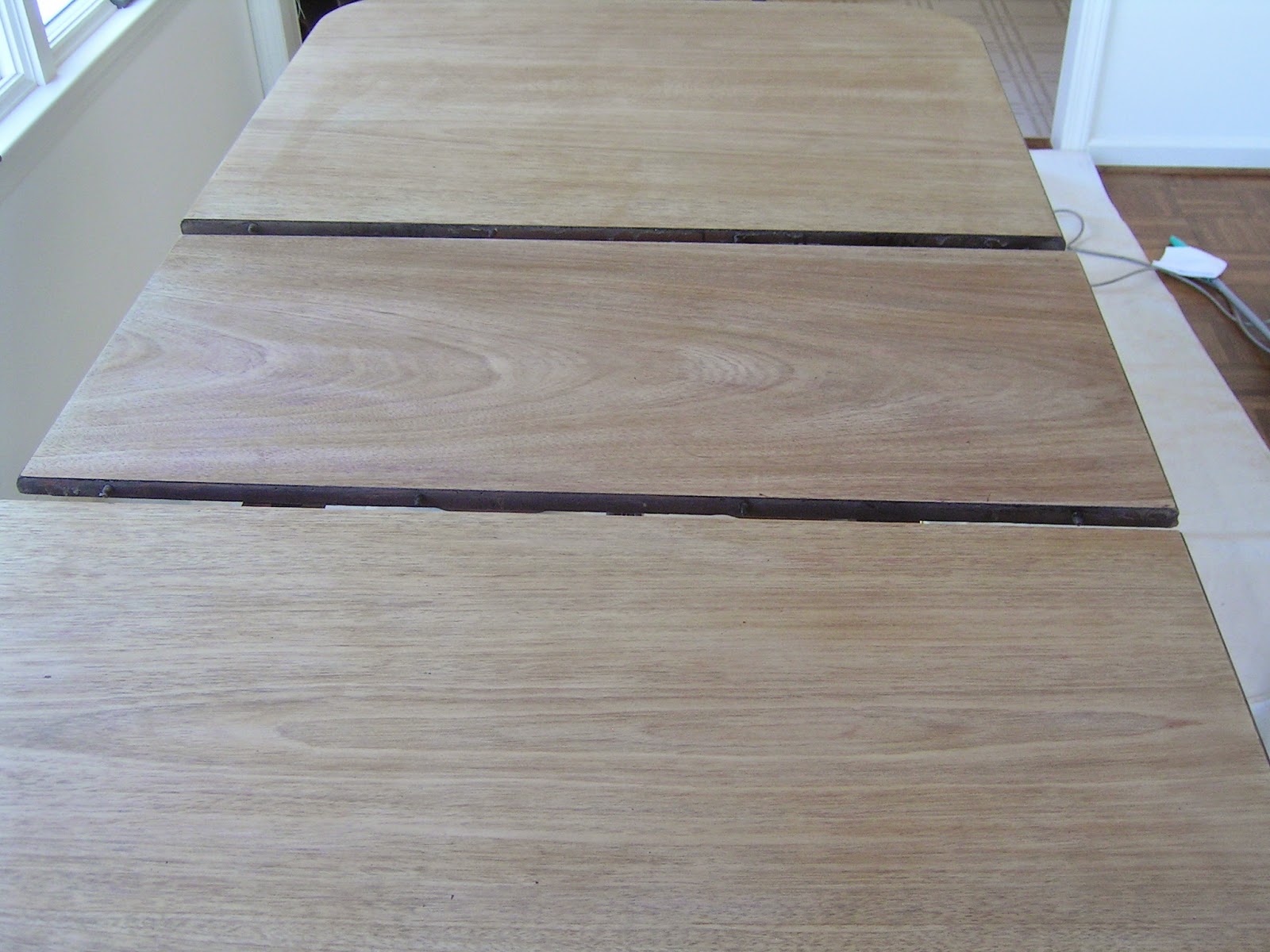Earlier, we told you we moved everything out of the dining room so we could refinish the floor. When then time came to move everything back into the dining room, we took a hard look at the dining room table. The finish had lots of nicks and scratches and worn spots. This wasn't a surprise because we (mostly me) have put this table through a lot in the last 35 years. I've used it as my cutting table for dozens of sewing projects and as my work bench for stripping off old car seat upholstery and then cutting, sewing, and installing the new upholstery. It's where I start my seedling garden plants in the spring. We've used it to inventory boxes of old car parts. It's no wonder the finish on the table looked so bad.
E used his small orbital sander to take off the old finish, starting with the leaf in the middle. If you look closely at the upper edge of the section on the right, you can see how badly the finish was worn in places. Also, when you look at these "before" photos, notice how the finish hides the grain of the wood.
E had the entire table sanded in a couple of hours. It would have gone faster, except we did this inside so he had a bag on the sander to catch the dust and he had to stop sanding and empty the bag every ten minutes. Here's what the entire table top looked like when E finished sanding.
Next came six coats of satin finish polyurethane coating.








